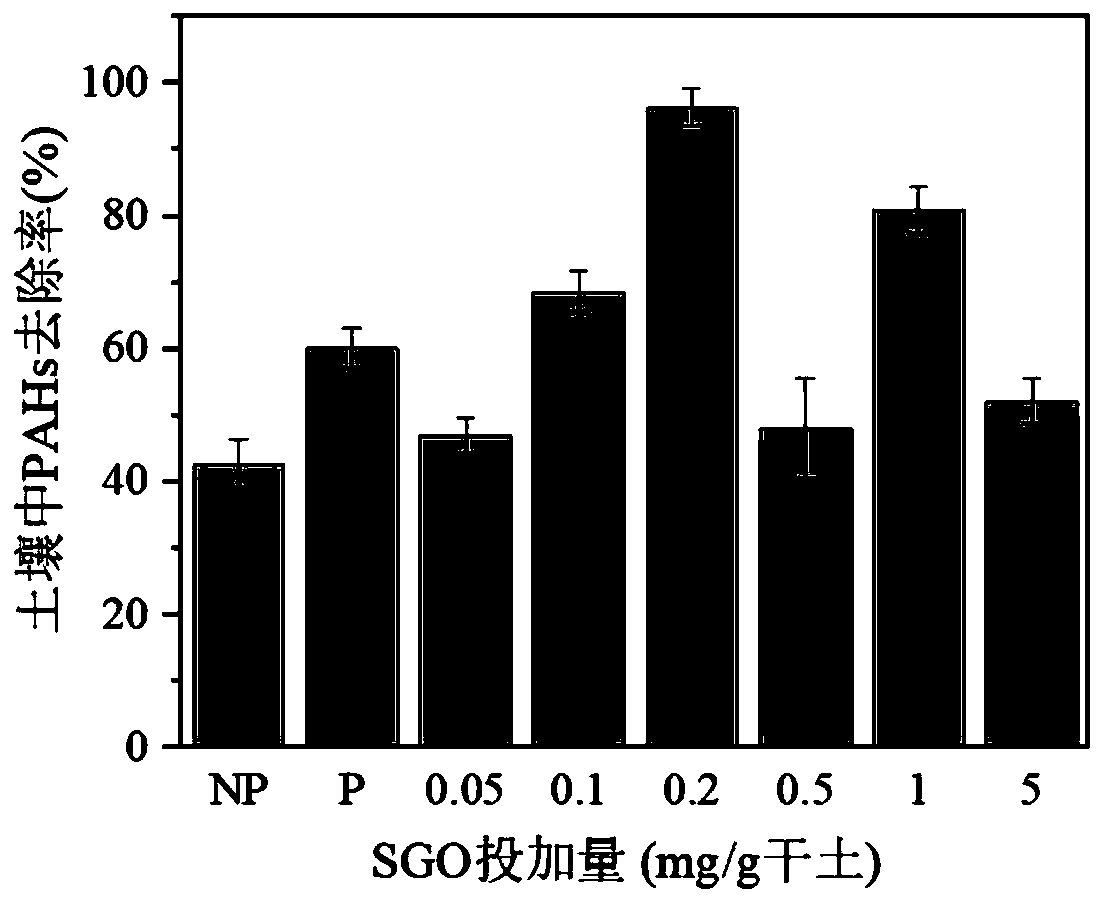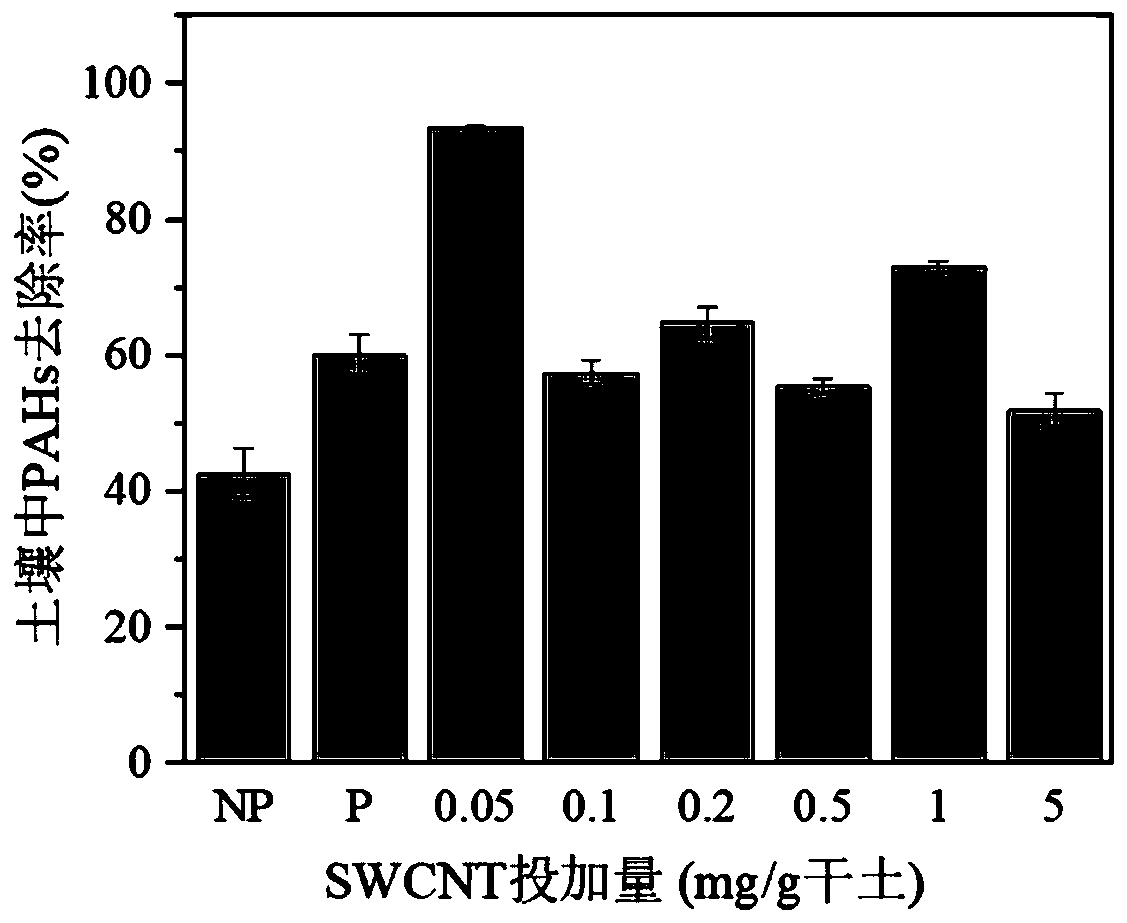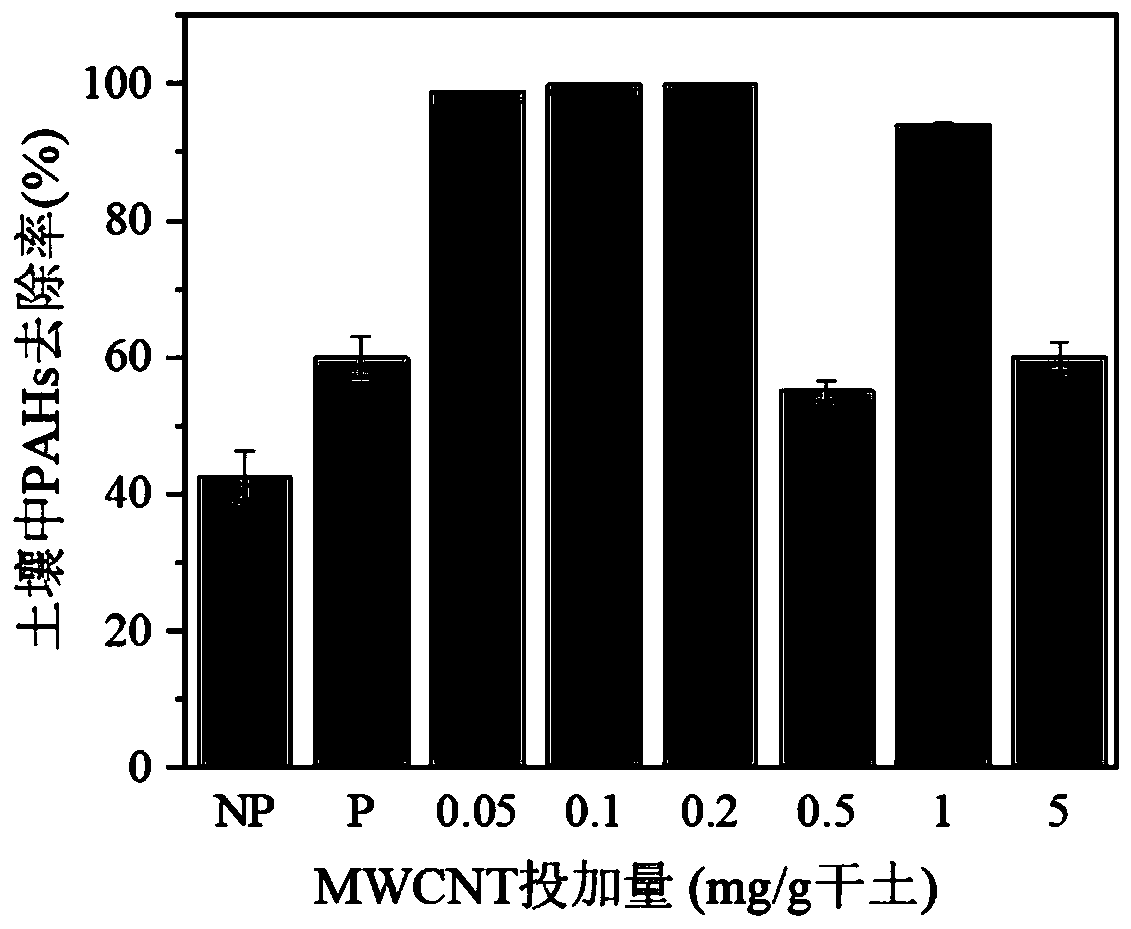Nano bioremediation method for high-concentration polycyclic aromatic hydrocarbon contaminated site soil
A polycyclic aromatic hydrocarbon and bioremediation technology, which is applied in the restoration of polluted soil, fertilization methods, grain cultivation, etc., can solve the problems of long restoration period and low removal efficiency of bioremediation technology, shorten the restoration period and improve restoration efficiency. , will not cause the effect of secondary pollution
- Summary
- Abstract
- Description
- Claims
- Application Information
AI Technical Summary
Problems solved by technology
Method used
Image
Examples
Embodiment 1
[0016] Example 1: The strengthening effect of different sulfonated graphene additions on the removal of PAHs in soil by alfalfa
[0017] The soil collected from a contaminated site of a coking plant in Nanjing was used as the test soil to carry out indoor pot experiments. The collected soil was naturally air-dried to remove the gravel and animal and plant residues, passed through a 4 mm sieve and mixed thoroughly. The PAHs content in the soil was 344.48 mg / kg. 0.6 kg of soil for potting, 0.215 g of urea per kg of soil, Ca(H 2 PO 4 ) 2 ·H 2 O 0.285g and K 2 SO 4 0.188g. Add sulfonated graphene to the soil, set different addition levels (0.05, 0.1, 0.2, 0.5, 1.0, 5.0 mg / g), and repeat three times for each treatment. Use the following method to germinate alfalfa seeds: Soak alfalfa seeds in 0.5% sodium hypochlorite solution for surface disinfection, clean them after 10 minutes, then place them in 95% alcohol solution for surface sterilization for 10 minutes, and rinse the...
Embodiment 2
[0020] Example 2: The strengthening effect of different single-armed carbon nanotube additions on the removal of PAHs in soil by alfalfa
[0021] The soil collected from a contaminated site of a coking plant in Nanjing was used as the test soil to carry out indoor pot experiments. The collected soil was naturally air-dried to remove the gravel and animal and plant residues, passed through a 4 mm sieve and mixed thoroughly. The PAHs content in the soil was 344.48 mg / kg. 0.6 kg of soil for potting, 0.215 g of urea per kg of soil, Ca(H 2 PO 4 ) 2 ·H 2 O 0.285g and K 2 SO 4 0.188g. Add single-armed carbon nanotubes to the soil, set different addition levels (0.05, 0.1, 0.2, 0.5, 1.0, 5.0 mg / g), and each treatment has three replicates. Use the following method to germinate alfalfa seeds: Soak alfalfa seeds in 0.5% sodium hypochlorite solution for surface disinfection, clean them after 10 minutes, then place them in 95% alcohol solution for surface sterilization for 10 minut...
Embodiment 3
[0024] Example 3: The strengthening effect of different multi-armed carbon nanotube additions on the removal of PAHs in soil by alfalfa
[0025] The soil collected from a contaminated site of a coking plant in Nanjing was used as the test soil to carry out indoor pot experiments. The collected soil was naturally air-dried to remove the gravel and animal and plant residues, passed through a 4 mm sieve and mixed thoroughly. The PAHs content in the soil was 344.48 mg / kg. 0.6 kg of soil for potting, 0.215 g of urea per kg of soil, Ca(H 2 PO 4 ) 2 ·H 2 O 0.285g and K 2 SO 4 0.188g. Add multi-armed carbon nanotubes to the soil, set different addition levels (0.05, 0.1, 0.2, 0.5, 1.0, 5.0 mg / g), and each treatment has three replicates. Use the following method to germinate alfalfa seeds: Soak alfalfa seeds in 0.5% sodium hypochlorite solution for surface disinfection, clean them after 10 minutes, then place them in 95% alcohol solution for surface sterilization for 10 minutes...
PUM
 Login to View More
Login to View More Abstract
Description
Claims
Application Information
 Login to View More
Login to View More - R&D
- Intellectual Property
- Life Sciences
- Materials
- Tech Scout
- Unparalleled Data Quality
- Higher Quality Content
- 60% Fewer Hallucinations
Browse by: Latest US Patents, China's latest patents, Technical Efficacy Thesaurus, Application Domain, Technology Topic, Popular Technical Reports.
© 2025 PatSnap. All rights reserved.Legal|Privacy policy|Modern Slavery Act Transparency Statement|Sitemap|About US| Contact US: help@patsnap.com



